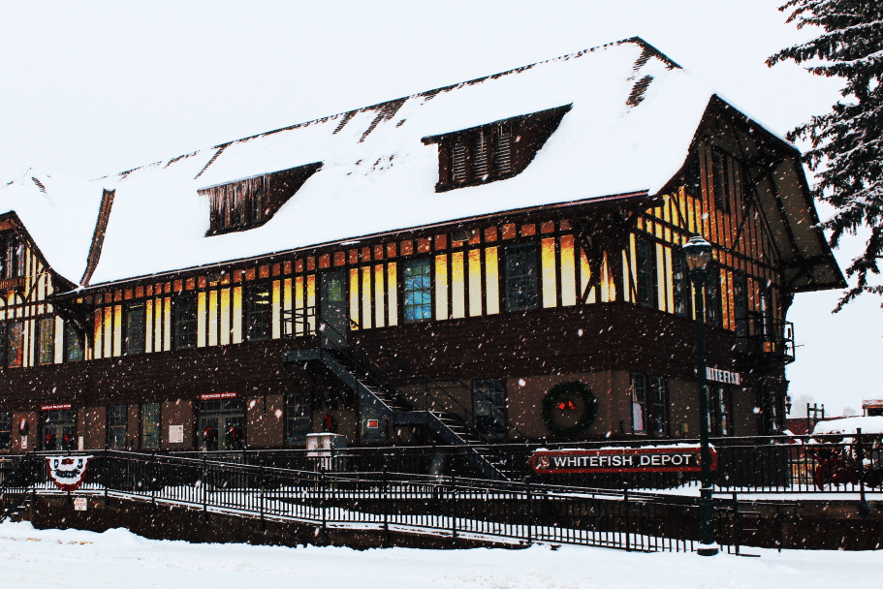To some, this place is known as the Whitefish Depot. To those aboard Amtrak, it’s a much-needed service stop at “WFH” (the Amtrak station abbreviation). And to the National Register of Historic Places, it’s known as the more particular “Great Northern Railway Passenger and Freight Depot and Division Office.”
Whatever it’s called, it’s undeniably one of the most unique railroad depots in America.
In 1904, the Great Northern Railway re-located its division point to Whitefish (from Kalispell) to save money, make money, and be strategically poised to make a lot more money. That is, the railroad sought to save money by avoiding the steep grades west of Kalispell that exhausted even the mightiest locomotives. The railroad also sought to profit from platting yet another division town, since the Whitefish area was little more than a trappers’ outpost and Native American fishing hole (i.e., a lake with whitefish). And with all the “rushes” (oil, coal, gold) just north of the Canadian border, having wildly lucrative exploits just a spur line away was a strategically wise move as well.
By 1927, Whitefish was more than just a town littered with tree stumps (hence the “Stumptown” moniker). It was a burgeoning town and an important stop between St. Paul and Seattle. Thus, an up-and-coming stop needed more than a run-down railroad station.
Architect Thomas McMahon was chosen for the design. McMahon was an accomplished architect in his own rite. However, he was perhaps more adept at handling the never-ending changes and demands of the railroad executives, including Louis W. Hill, son of the railroad tycoon James J. Hill – the founder of the Great Northern Railway, and the “Empire Builder” himself.
Father and son Hill envisioned Glacier National Park as the “American Alps.” They demanded that the hotels and buildings inside the park resemble Swiss architecture. And they insisted upon “cohesive architecture.” So if the Whitefish Depot appears similar to Many Glacier Hotel, it’s not by any matter of coincidence: both were defined by the same architectural vision, developed by the same railroad, and designed by the same architect.
Consequently, the Whitefish Depot, Many Glacier Hotel, and other Glacier National Park buildings share many elements and appointments (even just a brief comparison can yield more than a few “aha!” realizations). Likewise, the aspects that make the depot unique should also be appreciated.
For example, there’s the Great Northern “bruck” (part bus, part truck). Only a dozen brucks were ever manufactured – and the only one left is parked outside the Whitefish Depot. The railroad used the bruck to haul passengers, luggage, and goods, yet much like the depot, the bruck faded from use over time. Fortunately, the bruck, the depot, and other matters of local history have been restored by the Stumptown Historical Society, which is also located at the depot, alongside the very tracks that established Whitefish and remain vital in railroad operations today.
Indeed, a visit to the Stumptown Historical Society and the Whitefish Depot is well worth the trip. It’s a place where memories have been made, as generations have come and gone through the depot doors. It’s a place where you can learn something “new” from something “old” – and experience that historical/architectural je ne sais quoi, which seems to pervade throughout Glacier National Park and the Flathead Valley.
Jaix Chaix is a columnist and author of Flathead Valley Landmarks and other local history books that are available for sale at the Flathead Beacon at 17 Main St. in Kalispell.
